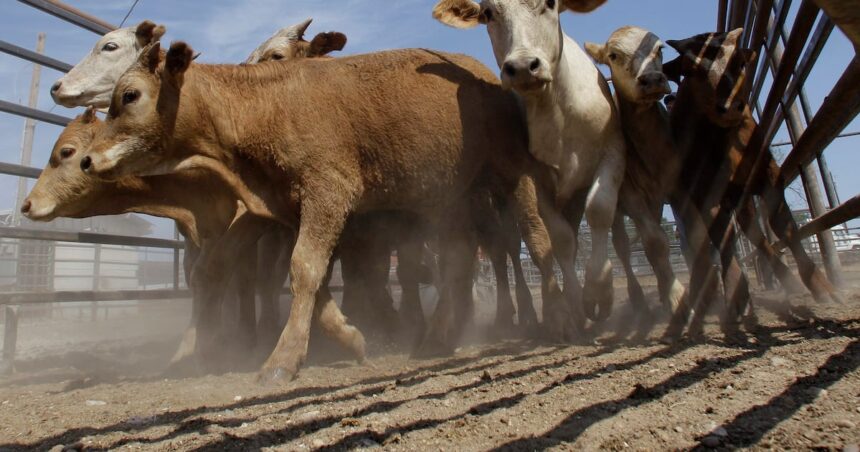The agricultural heartland of America faces a growing crisis as flesh-eating screwworm infestations spread through cattle herds across several southern states, threatening to disrupt beef supplies and potentially sending prices soaring at grocery stores nationwide. This parasitic scourge, not seen in the continental United States for over 50 years until recently, has already forced emergency quarantines and costly intervention measures.
“We’re dealing with an agricultural emergency that could have ripple effects throughout the entire food supply chain,” said Dr. Elaine Rodriguez, veterinary epidemiologist at the USDA’s Animal and Plant Health Inspection Service. “The speed at which these parasites can devastate livestock populations is alarming.”
The New World screwworm fly, scientifically known as Cochliomyia hominivorax, lays eggs in open wounds of warm-blooded animals. When the larvae hatch, they burrow into living flesh, causing devastating injuries that can kill cattle within ten days if left untreated. The current outbreak began in Florida and has since spread to parts of Texas, Louisiana, and Georgia, with officials scrambling to contain further transmission.
Economic analysts at the National Cattlemen’s Beef Association estimate the outbreak could reduce domestic beef production by 3-5% in the coming months, potentially driving consumer prices up by 8-12% by late summer. This comes at a particularly vulnerable time, as U.S. cattle inventories were already at their lowest levels in over 60 years following drought conditions across major ranching regions.
“The timing couldn’t be worse for both producers and consumers,” explained Michael Hernandez, agricultural economist at Cornell University. “With herd sizes already diminished and feed costs elevated, this parasite introduction creates additional pressure that will inevitably be reflected in higher retail prices.”
The USDA has deployed emergency response teams to affected areas, implementing sterile insect technique programs where laboratory-raised, sterilized male flies are released to mate with wild females, producing no offspring and eventually collapsing the population. This method successfully eradicated screwworms from the U.S. in 1966, but the current reintroduction has proven challenging to contain.
Cattle ranchers in affected regions face devastating losses. Sarah Johnson, who operates a 300-head operation in North Florida, has already lost 27 animals despite aggressive preventative measures. “We’re inspecting every animal daily, applying preventative treatments, and still losing cattle. The financial hit is substantial, and insurance doesn’t cover all these losses,” Johnson said.
Industry experts note that smaller ranching operations may be disproportionately affected, lacking the resources to implement comprehensive preventative protocols. Many face difficult decisions about herd reduction or even exiting the industry altogether if the outbreak persists.
For consumers, the impact will likely appear gradually at meat counters nationwide. While beef supplies remain stable for now, reduced production combined with increased biosecurity costs will eventually translate to higher prices, particularly for premium cuts. Some retailers have already begun adjusting procurement strategies in anticipation of tightening supplies.
“We’re looking at a potential 30-45 day window before consumers really feel the pinch,” said Teresa Blackwell, retail food analyst at Morgan Stanley. “The summer grilling season typically sees increased demand anyway, so the timing of this supply disruption could exacerbate price increases.”
Climate change may be partially responsible for the parasite’s reemergence and spread. Warming temperatures have expanded the potential range of the screwworm fly northward, creating hospitable conditions in regions previously protected by colder winters. This raises concerns about whether such outbreaks might become more common in the future.
As agricultural officials race to contain the spread, the question remains: will American consumers accept higher beef prices, or will this crisis fundamentally alter consumption patterns in a way that reshapes the industry for years to come?

























